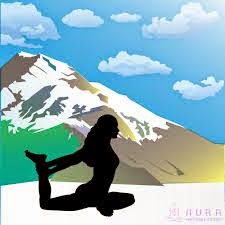By: Virginia Iversen, M.Ed
Many Yoga teachers often
strive to balance offering their students a challenging and creative series of
Yoga postures and breathing exercises, while still maintaining a high degree of
student safety in their classes. For some Yoga teachers, this quandary may
prove to be quite difficult. This balance can be especially challenging to
establish if you are a new teacher. However, with the graceful and strategic
use of modified Yoga poses and supportive props, you will be able to lead your
students through a challenging series of asanas and pranayama exercises,
without risking their safety.
The artful use of modified
Yoga poses and props, such as chairs, bolsters, blankets, and straps, can
immeasurably increase the variety of Yoga postures that you can offer to your
students during class. The intelligent use of props and modified postures
develops with time and teaching experience. Using props and suggesting
appropriate modified postures will support your ability as a teacher to lead
your students through a comprehensive, challenging and exhilarating practice of
Yoga postures, without sacrificing your students’ safety or well-being.
This is particularly
important when you are teaching a multi-level class with intermediate and
beginning students all mixed together. In many Yoga studios, health clubs and
community centers, the students who are attending Yoga classes are often at
various levels of aptitude and physical fitness. In order to keep the more
advanced students challenged and the beginning students “up to speed” with your
class, while not risking injury, spotting students who would benefit from
modifying a pose or two and using strategically placed props, is quintessential
part of the art of teaching Yoga well.
* Modified Pigeon Pose or
Eka Pada Rajakapotasana
Pigeon Pose is a wonderful
Yoga posture for deeply opening the hips and alleviating sciatic pain and lower
back stiffness. This hip-opening posture also improves the overall alignment of
the spine and helps to release feeling of anxiety, trauma and stress that is so
often energetically lodged in the hip area. Pigeon Pose is quite simple to
modify, if you are teaching some students who are quite tight throughout the hips,
groins and knees. By placing a blanket underneath the folded leg in Pigeon
Pose, many students, who would otherwise find the pose to be too uncomfortable
to perform, will be able to benefit from the practice of Pigeon Pose with a
minimal amount of discomfort and stress to the knee joint.
For those Yoga students
who find that entering into Pigeon Pose without the support of a folded blanket
or bolster is too intense or puts too much pressure on the knee, the use of
props in Modified Pigeon Pose will help these students to practice the posture
in a much safer fashion. Pigeon Pose is usually practiced after a series of Sun
Salutations and standing asanas and prior to backbends, inversions and seated
forward folds. Before leading your students through the practice of Modified
Pigeon Pose, make sure that the students who wish to practice the modified
version have a folded blanket or bolster nearby to place underneath the hip of
their folded leg.
When you are ready to lead
your Yoga students through the practice of Modified Pigeon Pose, have them
begin to flow through the beginning postures of the Sun Salutation until them
come to Downward Facing Dog. From Downward Facing Dog, guide your students to
place their right lower leg parallel to the front of their Yoga mat or as close
to parallel as possible. For those students who need some extra support, have
them place a bolster or folded blanket underneath their right hip, so that
their hip bones are parallel to the front of the room and there is minimal pressure
on the knee joint. Ask your students to hold Pigeon Pose for three to five
breaths, and then remove the blanket or bolster if they are using one, and
slowly move back into Downward Facing Dog. Repeat Modified Pigeon Pose on the
left hand side when your students are ready.
Virginia Iversen, M.Ed, has
been practicing and studying the art of Yoga for over twenty years. She lives
in Woodstock, New York, where she works as a writer and an academic support
specialist. She is currently accepting Yoga and health-related writing orders
and may be contacted at: enchantress108@gmail.com.
